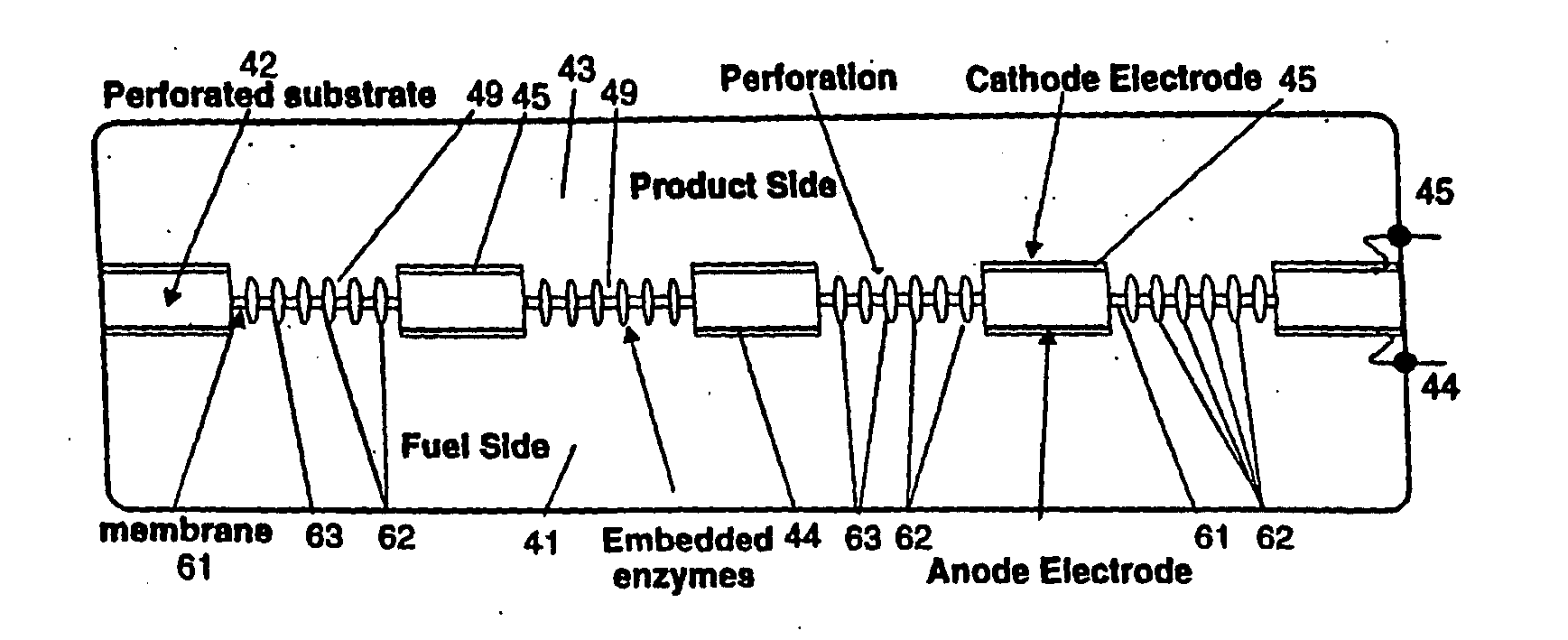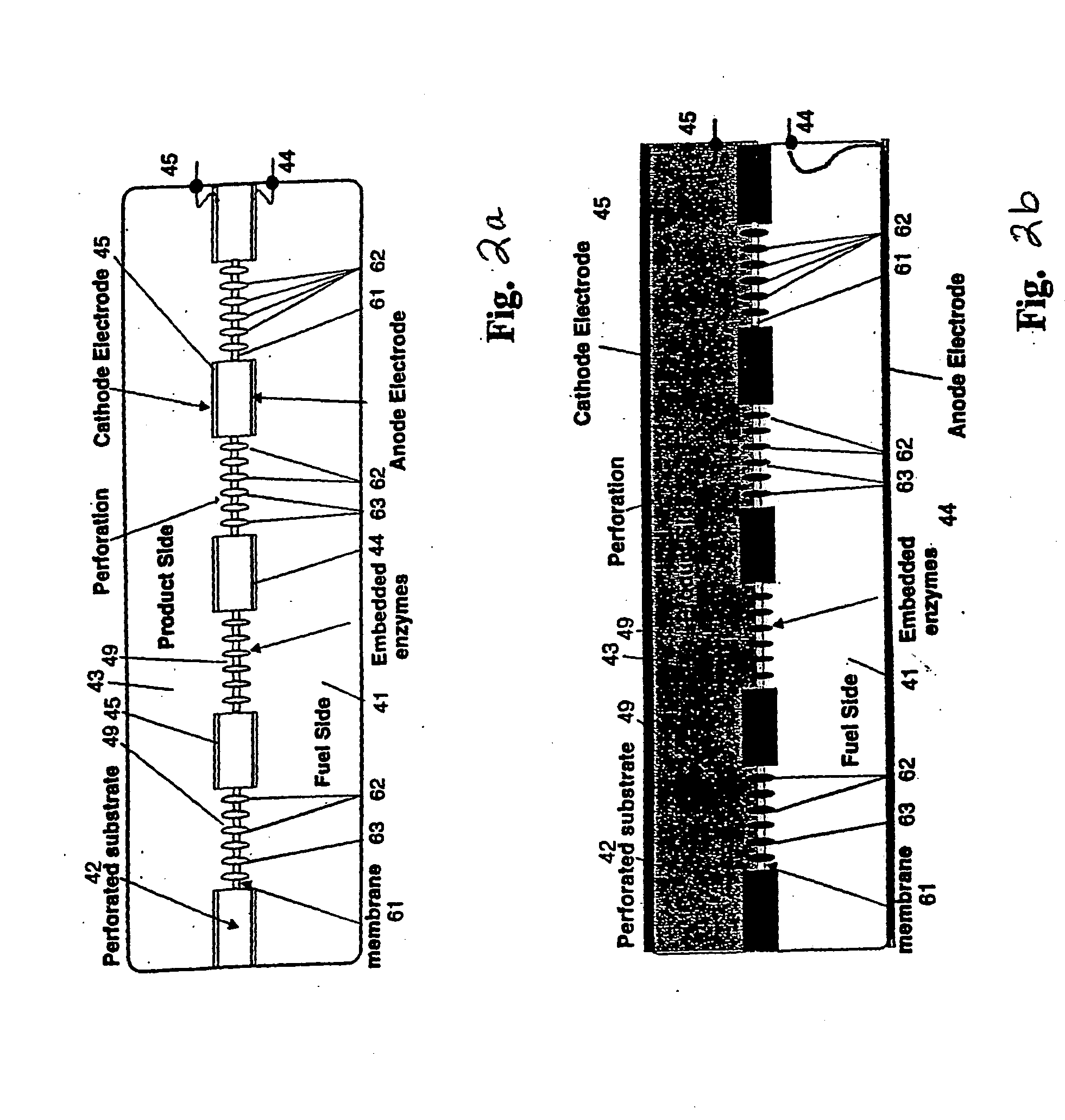Fuel cells including biocompatible membranes and metal anodes
- Summary
- Abstract
- Description
- Claims
- Application Information
AI Technical Summary
Benefits of technology
Problems solved by technology
Method used
Image
Examples
example no.1
Example No. 1
[0136] A solution useful for producing a biocompatible membrane in accordance with the present invention was produced as follows: 7% w / v (70 mg) of a block copolymer (poly (2-methyloxazoline)-polydimethyl siloxane-poly(2-methyl(oxazoline) having an average molecular weight of 2 KD-5 KD-2 KD was dissolved in an 95% v / v / 5% v / v ethanol / water solvent mixture with stirring using a magnetic stirrer. Six microliters of this solution was removed and mixed with four microliters of a solution containing 0.015% w / v dodecyl maltoside, 40 micrograms of Complex I (10 mg / ml) in water. This is then mixed. The resulting solution contains 4.2% w / v polymer, 55% EtOH v / v, 45% H2O v / v, 0.06% w / v dodecyl maltoside and protein / polymer ratio is 6% w / w.
example no.2
Example No. 2
[0137] A solution useful for producing a biocompatible membrane in accordance with the present invention was prepared generally as described in Example No. 1 with the following changes: less polypeptide solution was used so as to provide a final solution including 0.015% w / v dodecyl maltoside and 1.5% w / w polypeptide relative to synthetic polymer materials.
example no.3
Example No. 3
[0138] A solution useful for producing a biocompatible membrane in accordance with the present invention was prepared generally as described in Example No. 1 with the following changes: less polypeptide solution was used so as to provide a final solution including 0.03% w / v dodecyl maltoside and the final solution contained 3.0% w / w polypeptide relative to synthetic polymer materials.
PUM
| Property | Measurement | Unit |
|---|---|---|
| Flow rate | aaaaa | aaaaa |
| Biocompatibility | aaaaa | aaaaa |
Abstract
Description
Claims
Application Information
 Login to View More
Login to View More - R&D
- Intellectual Property
- Life Sciences
- Materials
- Tech Scout
- Unparalleled Data Quality
- Higher Quality Content
- 60% Fewer Hallucinations
Browse by: Latest US Patents, China's latest patents, Technical Efficacy Thesaurus, Application Domain, Technology Topic, Popular Technical Reports.
© 2025 PatSnap. All rights reserved.Legal|Privacy policy|Modern Slavery Act Transparency Statement|Sitemap|About US| Contact US: help@patsnap.com



